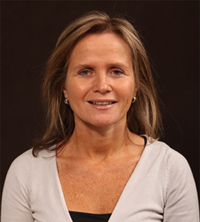 (1).jpg) Dr. Timothy HenrichA variety of different approaches to HIV eradication have been discussed in these updates. But this update is a bit different, describing a critical issue: How might we better assess the likelihood of HIV resurgence after stopping ART and, if possible, the probable time frame for such a recurrence, in a given patient?
Dr. Timothy HenrichA variety of different approaches to HIV eradication have been discussed in these updates. But this update is a bit different, describing a critical issue: How might we better assess the likelihood of HIV resurgence after stopping ART and, if possible, the probable time frame for such a recurrence, in a given patient?
Writing in the January issue of The Lancet HIV, amfAR-funded scientists Timothy Henrich of the University of California, San Francisco (UCSF), and Sharon Lewin of the University of Melbourne, with colleagues from Johns Hopkins University and UCSF, note that a stem cell transplant approach that replicates the experience of the “Berlin patient” remains “the only approach that has led to a meaningful decrease in latently infected cells in individuals on ART."
 Dr. Sharon LewinThe Berlin patient is a formerly HIV-positive man with leukemia, who in 2008 became the first and only person known to have been cured of HIV after he received a stem cell transplant from a donor with a rare genetic mutation (the CCR5 mutation) that confers resistance to HIV infection. The authors state that such a procedure remains “the only approach that has led to a meaningful decrease in latently infected cells in individuals on ART.” The most definitive way to document another such cure, as a result of stem cell transplantation or any other intervention, requires that the person be taken off anti-HIV drugs.
Dr. Sharon LewinThe Berlin patient is a formerly HIV-positive man with leukemia, who in 2008 became the first and only person known to have been cured of HIV after he received a stem cell transplant from a donor with a rare genetic mutation (the CCR5 mutation) that confers resistance to HIV infection. The authors state that such a procedure remains “the only approach that has led to a meaningful decrease in latently infected cells in individuals on ART.” The most definitive way to document another such cure, as a result of stem cell transplantation or any other intervention, requires that the person be taken off anti-HIV drugs.
But this so-called analytical treatment interruption has risks, which raise several ethical questions. Particularly in the realm of stem cell transplantation, aggressive viral rebound has been seen, with associated morbidity, possible mortality, and a chance of the emergence of a drug-resistant virus. Risks to sexual partners in case of such rebound must also be recognized. The need for very close, very frequent monitoring with available technologies to assess viral load and latent virus reservoirs is cumbersome, costly, and may involve years of surveillance.
But, as Henrich and associates note, “An understanding of the mechanisms by which [these transplants] can result in sustained ART-free remission or the reasons why it fails to do so could reveal key information to advance HIV cure research.”
With these concerns in mind, amfAR is hosting a think tank in Memphis in early March to try to identify methods by which HIV relapse can be predicted following a treatment interruption related to a cure trial. We’ll keep you informed.